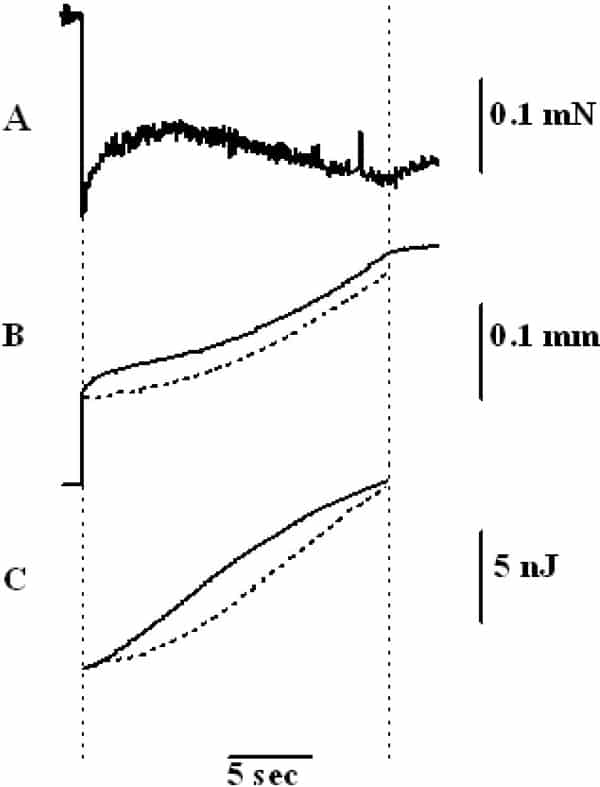The mechanical properties of muscle are traditionally studied under isotonic or isovelocity conditions. In contrast, during real-life movements isotonic or isovelocity conditions are unlikely, at least partly because loads to the muscle may comprise a combination of inertial, elastic, viscous, frictional, gravitational and/or other components. The responses (e.g. force output) to such loading may be complex and are not well understood. To understand them, we are attempting to examine simple systems but with more ‘realistic’ loading conditions before we add more complexity. In particular, we have developed a method to study the mechanical output of single, skinned fibre segments as they actively shorten against loads with “virtual” elastic and inertial components. Using single fibres enables direct measurements of fibre length changes and force. Single skinned fibre segments are prepared from needle biopsy material from the human vastus lateralis muscle and mounted between a force transducer and a motor (He et al. 2000). Once fully activated (pCa 4.5) under fixed-end conditions, a rapid length change slackens the fibre. The resulting drop in tension triggers a newly designed feedback control circuit which, upon tension redevelopment, drives the motor such that the fibre shortens as though against a mass-spring system. The input to the circuit is the force applied by the fibre to the force transducer. Its output at any instant is the addition of two signals: one that is proportional to the double time integral of the force signal (inertial component) and one that is proportional to the force signal (elastic component). Figure 1 illustrates results from a trial. This system allows the study of the mechanical responses of active single muscle fibres shortening against added series elasticity and inertia. More complexity may be added to the experiments by, for example, increasing load complexity, or by using intact muscle preparations. This provides a systematic approach to the study of how the complex response patterns observed during real-life movements are synthesized from simpler components.
Life Sciences 2007 (2007) Proc Life Sciences, PC528
Poster Communications: A new method for studying single muscle fibre mechanics under ‘natural’ loading conditions
A. Galantis1, S. Harridge1
1. Division of Applied Biomedical Research, King's College London, London, United Kingdom.
View other abstracts by:
Figure 1. Time-course of some mechanical variables. A: Force; B: Fibre shortening (solid) and distance moved by virtual mass (dash); C: Work done by fibre (solid) and kinetic energy of mass (dash). Vertical cursors indicate the feedback control period. Initial fibre length 0.47 mm; average diameter 73 μm; virtual compliance 0.36 m N-1; virtual mass 58 kg; temperature 11.0 0C.
Where applicable, experiments conform with Society ethical requirements.

